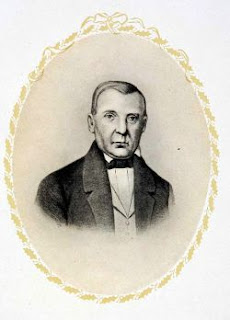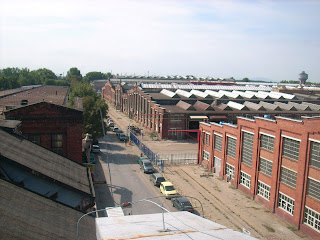I know that
the blog should be about Wroclaw. But it is also about travelling and learning
about other cultures, so I would like to share with you some information about my
trip to India in April 2010. I was lucky enough to get invited to visit some
Indian schools and, amongst others, a school run for the tribal kids in Muvalia district of Dahod city in the state of Gujarat. It was a lifetime and life-changing
experience. There is also a boarding
hostel, so that these poor kids, very often orphans, can be provided education,
no matter how far from the school they live. I saw these extremely poor and
basic living conditions of the kids in the hostel and the studying rooms, where
they didn’t even have the minimum of ‘fresh’ air, i.e. not even the smallest under-ceiling fan.
But the most striking thing is that the kids do not demand anything more, they
have never seen a toy in their life, yet it is enough to make them happy just
smiling to them, waving hello, shaking hands and making a photo together. They
prepared such amazing artistic and dance performances for us!
 |
| They youngest girls really liked our visit:-) |
 |
| Mahatma Gandhi |
 |
| Studying room |
 |
| Dormitory |
The school and
the hostel are run by Christian missionaries and lots of people of good will,
who do a lot of hard social and educational work for the tribal people. They
continuously struggle with the lack of drinking water and food and expenses for
basic things. I was crying when I saw all this and immediately wanted to help
the Indian children. I am not too big a fan of soft toys, but when I realized that
the kids there had never played with anything like that and they had never seen a
toy in their life I immediately came up with an irrational idea of sending them
some soft toys (400!). It was a silly idea or rather a cry od despair, but it shows
how much I got influenced by what I had seen and felt there and how much I wanted to help them, though, ironically
enough,the kids were safe, smilling and looking happy. Yet, I was immensly struck and heart-broken by
the extremely basic conditions they live in, and then, after talking with the
headmaster of the school and the hostel, by the continuous struggle to keep the
hostel running. In 1998 they started a boarding for the tribal children who
have no facilities to go the school near their homes. The tribal people of this
area have been systematically exploited by the dominant caste people and the
charitable trust, which established the mission, are making efforts to liberate
them from their clutches. The trust’s major interest is in the upcoming of the
poor and marginalized tribal people of the surrounding areas. Their prime
concern and the focus is on the education of tribal children which will
definitely bring changes in their life as they grow. To provide quality education
today they have a residential self-financing Gujarati medium primary School
(1-7 classes) with 490 boys and girls. The students of the school live in the
boarding hostels. They have also successfully established a social work department
called Tribal Social Welfare Society. It runs developmental and women
empowerment-related projects which take place in more than 40 villages. Yet, vast majority of
the area of Dahod district remains untouched.
 |
| A tribal family in Muvalia village in front of their house |
 |
| A kitchen in the tribal house |
Hostels
Running a
school for kids who live many, many kilometres away from their villages and cannot
walk to that school regularly would not make sense without providing them a
possibility of board and lodging. Thanks to the generosity of good people
(including many Wroclawians) and charity organisations worldwide they run two
hostels: Adivasi Kumar Chatralaya
(tribal boys' hostel) Adaivasi Kanniya Chatralaya (tribal girls' hostel),
Muvalia. The hostels are just not a
place for sleeping but it is a large dome made up of discipline, knowledge,
love and affection. Children are given ample opportunities to develop and to
enhance their skills and talents through dancing, singing, rangoli making,
public speaking competitions, playing various games and musical instruments. Knowledge
and growth of technology is being built in them by reading daily newspapers and
by conducting quiz-competitions. The children are given nutritious food in
order to be healthy and to be more active in their daily tasks. Sports like football,
volleyball, running, skipping and swimming keep up the sharpness and the growth
of children.
The
donations they received from the kind-hearted people of Wrocław in 2010-2011
have been used for the hostel kitchen provisions and for mosquito net fittings
in the hostel building.
 |
| Everyday bath in the nearby river |
 |
| School milk-giving buffalloes |
.jpg) |
| Waiting for lentils dal |
 |
| Teeth brushing |
 |
| Washing up after a meal |
 |
| They sleep almost on the plain floor |
School
At present
there are 370 boys and 120 girls in the residential school and they come from a
very poor background, most of their parents are migrant workers and small
farmers. The children are not orphans but they are poor tribal children who
have no facilities to go to school near their homes. These children are from 25
villages of the tribal district of Dahod. It is quite difficult to find funds for feeding them three times a day. On
average they use 120 kgs of rice, 75 kgs of wheat flour and 6 kgs of lentils dal. Besides
this, they need money for vegetables, oil, masala (spices), firewood and three
cooks salary, etc.
“It is a noble task but it is a challenging one, but we do it
to provide a better and dignified future life for the poor tribal children. We
give importance for academic studies and also initiate them to extracurricular
activities like sports, games, cultural and literacy competitions. We do
conduct weekly and monthly tests to evaluate the progress of the children in
the school and weak children are given special coaching classes in our hostel
premises.” (from the headmaster’s letter).


 |
| Performing regional dances - Indian kids love dancing! |
What are
the future needs of the residential school children at Muvalia?
1. They
need support for the kitchen provisions (rice purchase) at least for six
months.
2. They need to build some more toilets in the
boys' hostel building.
3. They need to provide 60 desks and benches
for the school classrooms.
If you want
to help, please send me a personal message at info@welcome2wroclaw.pl. You can make
a general donation or pay for education and food of an individual child. Thank you!
P.S. On 15 January there was held the second big charity event for raising funds for the school in Muvalia. The next one - a concert - is going to take place on 26 May.
All photos by Katarzyna Szostak and Muvalia School.








.jpg)





































